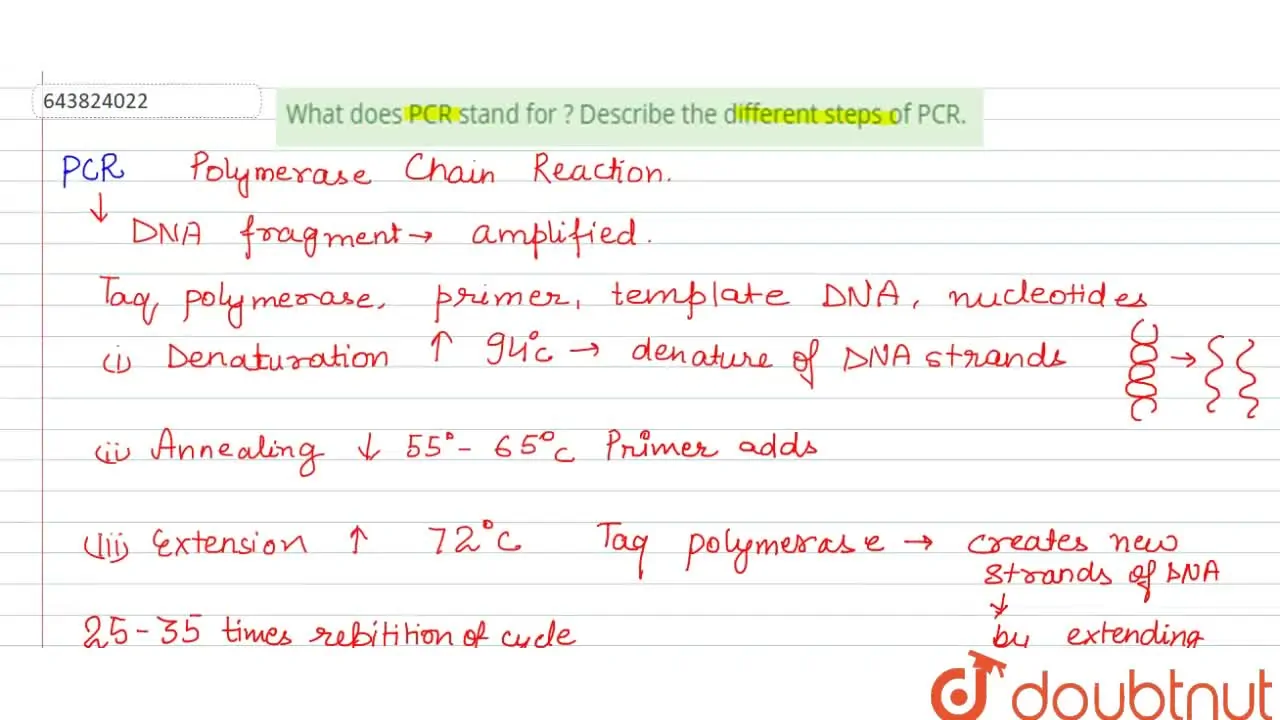What does PCR stand for ? Describe the different steps of PCR.
Video Solution
Text Solution
PCR (Polymerase Chain Reaction) method for synthesis of new DNA strands was developed by Kary Mullis in the 1980s. The technique of PCR is ability of DNA polymerase enzyme to synthesize new strand of DNA complementary to the template strand. DNA polymerase can add a nucleotide only onto a pre-existing 3.-OH group, so it needs a primer to which it can add the first nucleotide. At the end of the PCR reaction, the specific sequence will be accumulated in billions of copies (amplicons).

Process : There are three main steps in the process of PCR Denaturation, Annealing and Extending.
(i) Denaturation : The double stranded template of DNA is heated at a temperature of 94−96∘C to separate them into two different strands.
(ii) Annealing : During this step the temperature is cooled to 40−60∘C and the primers are annealed to single stranded DNA.
(iii) Extending : This step is final step and the temperature is increased to 72∘C and the DNA is elongated with the help of heat stable enzyme Taq DNA polymerase. The process is repeated 20-40 times to get the desired amount of DNA. The newly synthesized DNA is subjected to same procedure to double the DNA content from the previous cycle.
|
Updated on:21/07/2023
Related Playlists
Similar Questions
What does ICSI stand for? Describe the technique.
View SolutionPCR is used for
View SolutionWhat is the use of PCR
View SolutionWrite any three uses of PCR
View SolutionFind out the correct sequence of PCR
View SolutionWhat are the steps involved in PCR ?
View SolutionExpand the PCR
View Solution(a) Describe the different steps in one complete cycle of PCR.
(b) State the purpose of such an amplified DNA sequence.View SolutionDescribe the roles of heat , primers and the bacterium Thermus aquaticus in the process of PCR.
View SolutionExpand PCR, Bt.
View Solution


